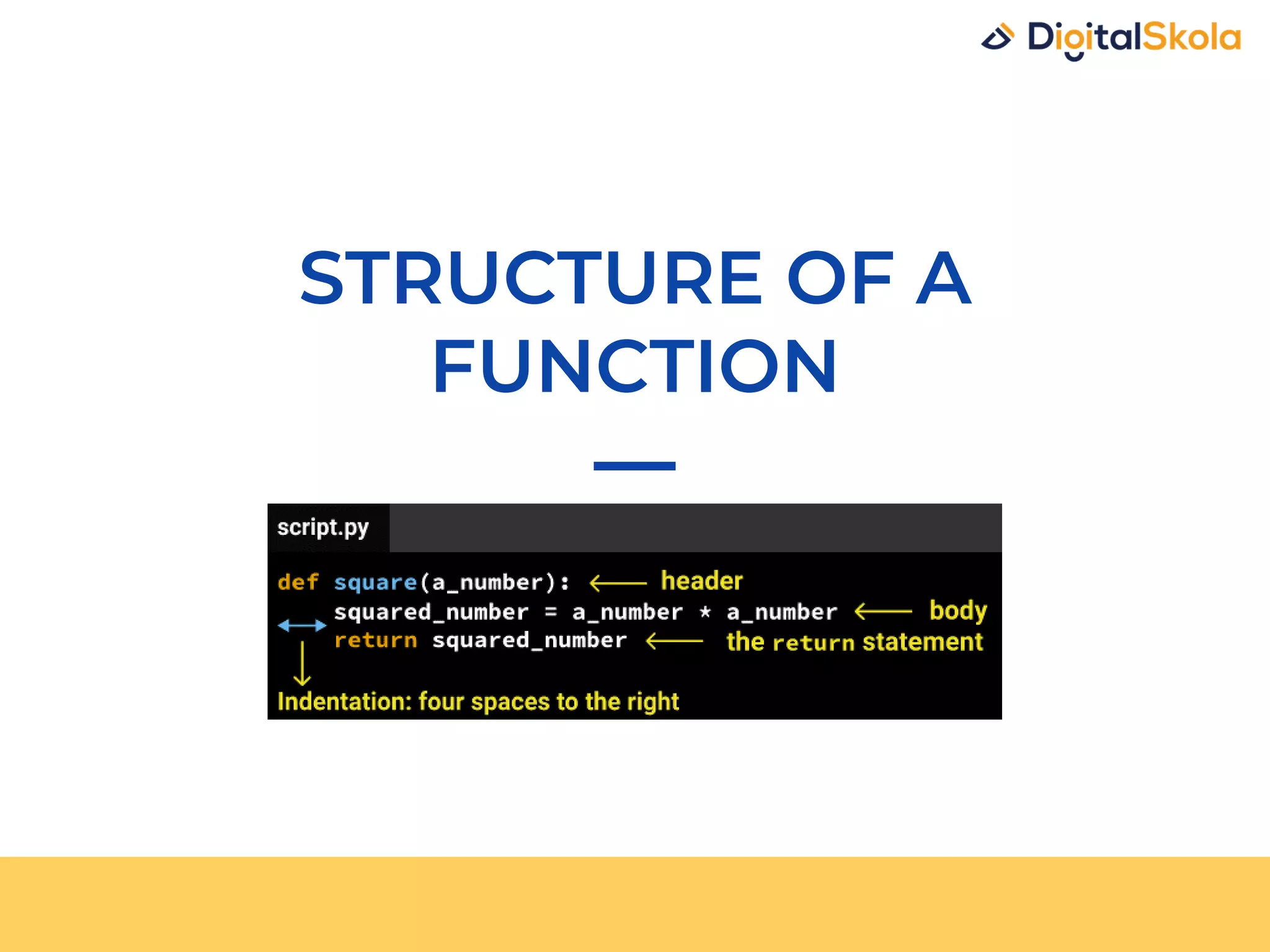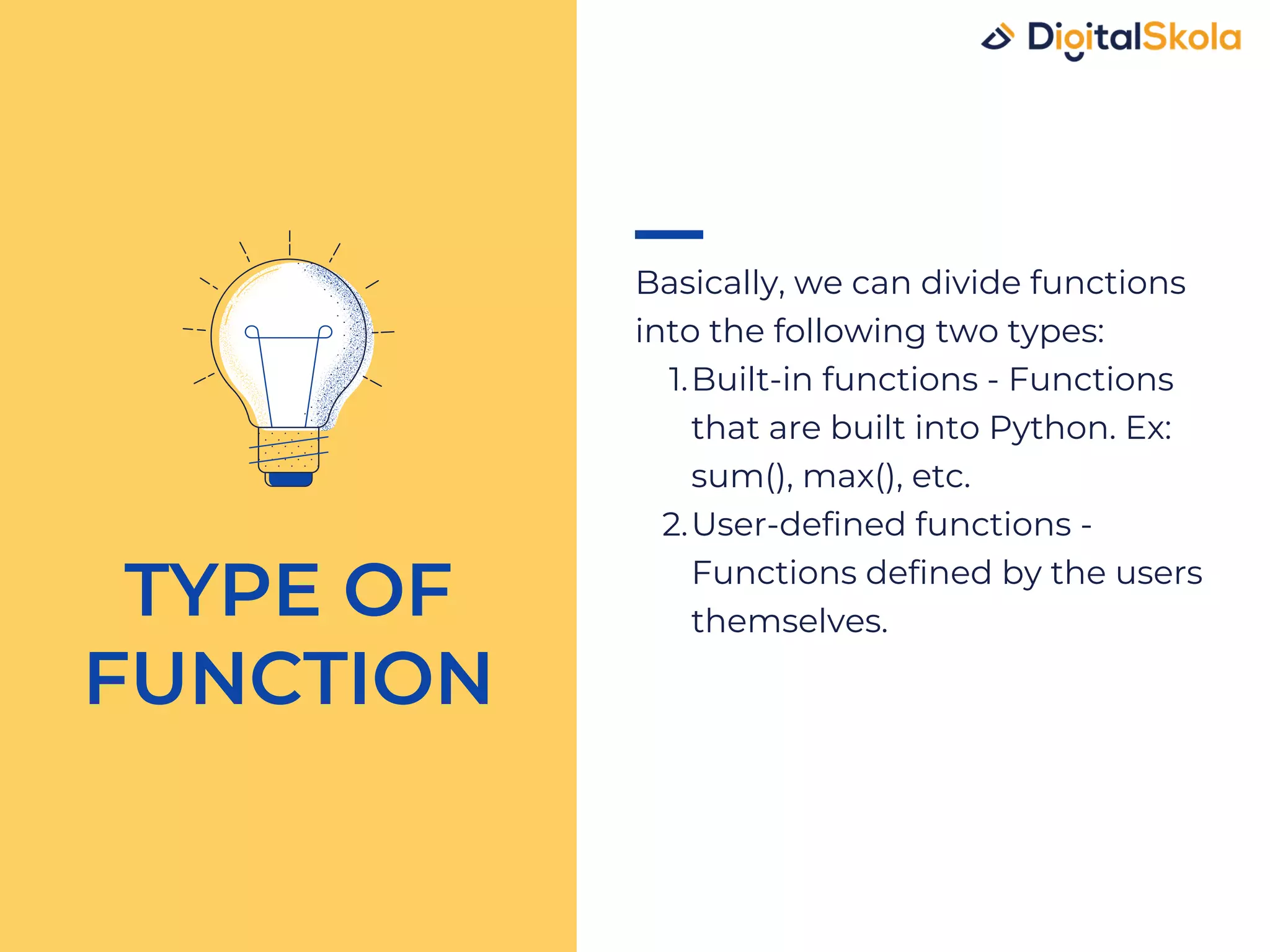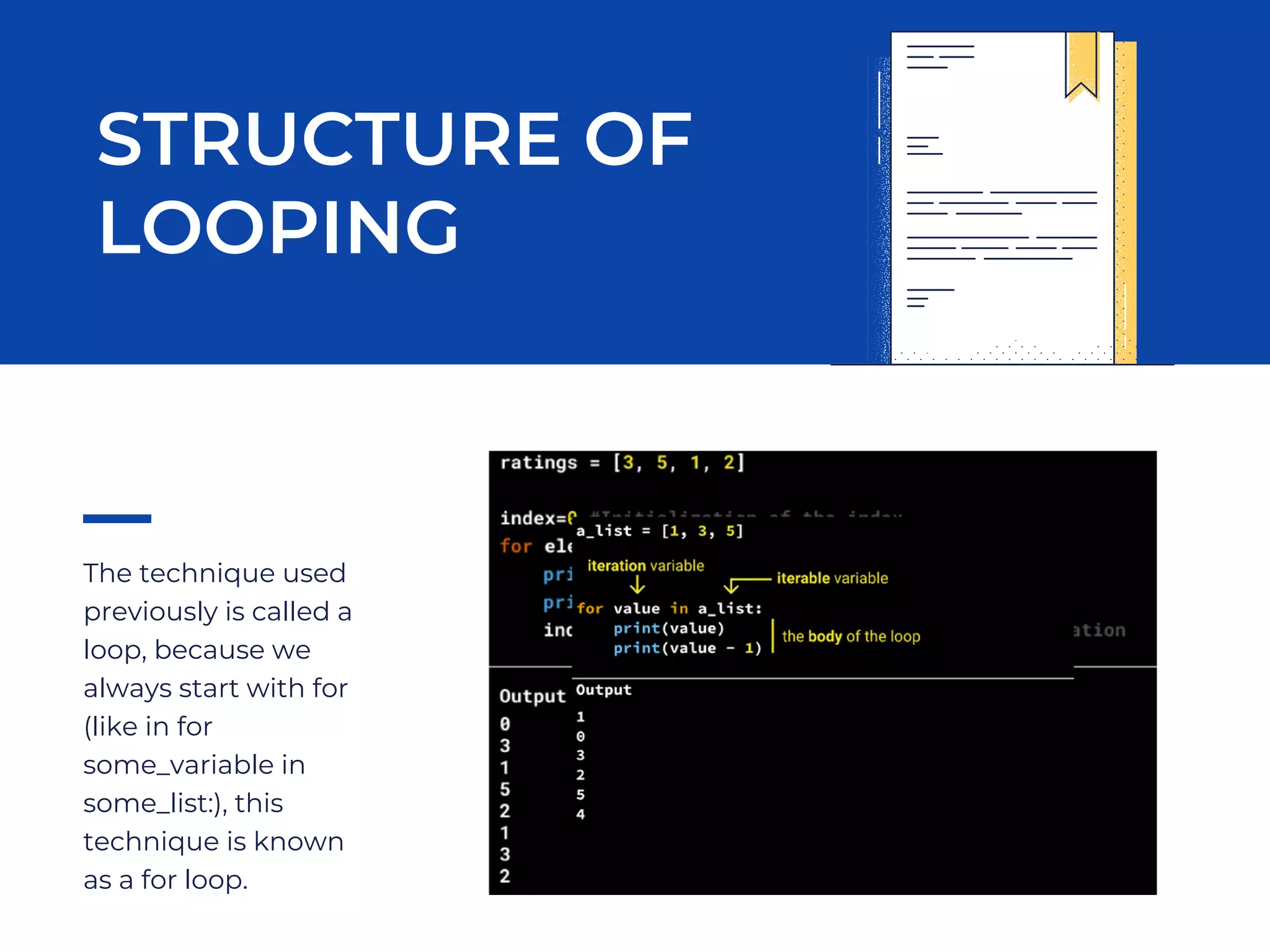Download to read offline





![Python offers us an easy way to repeat a process, which helps us when we need to repeat a process hundreds, thousands, or even millions of times. Let's say we have a list [3, 5, 1, 2] assigned to a variable ratings, and we want to repeat the following process: for each element in ratings, print its index and itself. This is how we could translate that into Python syntax: LOOPING IN PYTHON](https://image.slidesharecdn.com/pythonfunctionandlooping-210327165323/75/Python-Function-and-Looping-6-2048.jpg)



The document explains the concept of functions in Python, highlighting their purpose to perform specific tasks, streamline code, and reduce repetition. It distinguishes between built-in functions and user-defined functions, and describes how Python's looping structure, particularly for loops, allows for the repetition of processes efficiently. An example is provided to demonstrate how to use loops to iterate through elements in a list.





![Python offers us an easy way to repeat a process, which helps us when we need to repeat a process hundreds, thousands, or even millions of times. Let's say we have a list [3, 5, 1, 2] assigned to a variable ratings, and we want to repeat the following process: for each element in ratings, print its index and itself. This is how we could translate that into Python syntax: LOOPING IN PYTHON](https://image.slidesharecdn.com/pythonfunctionandlooping-210327165323/75/Python-Function-and-Looping-6-2048.jpg)

